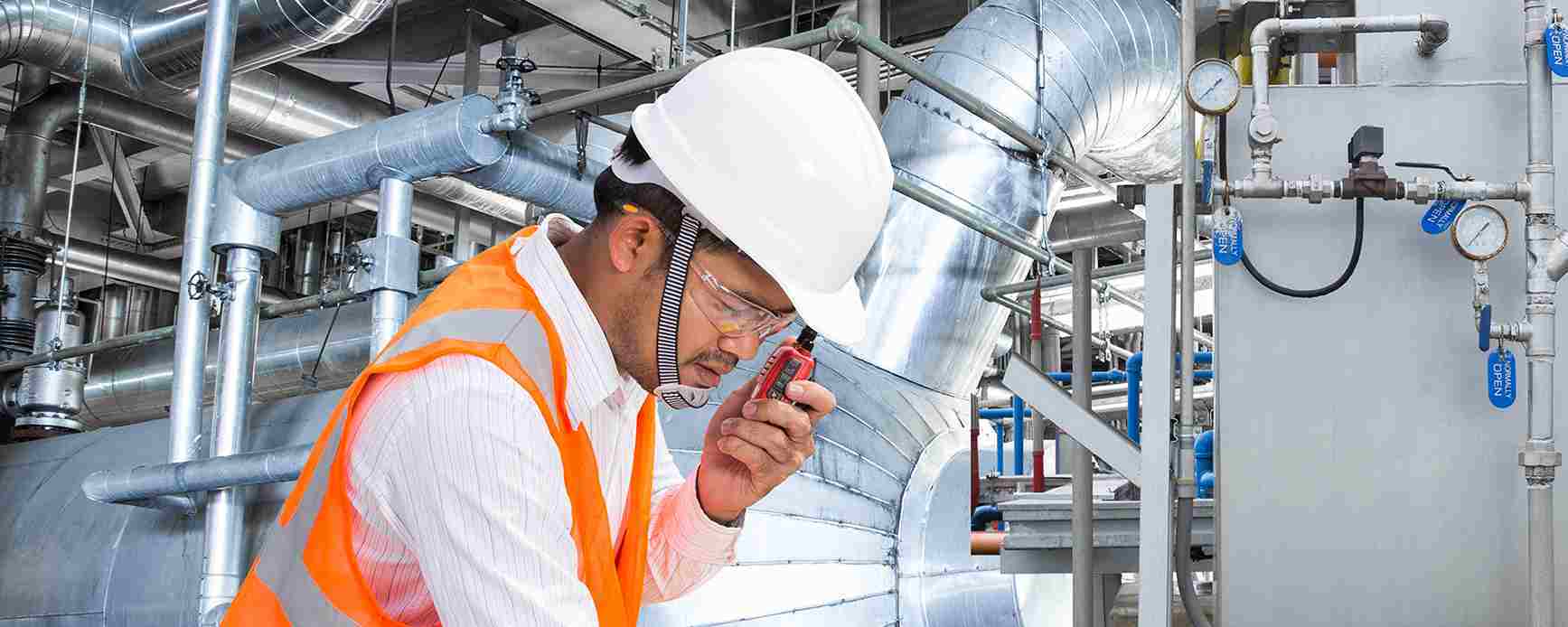
How to Create an Equipment Downtime Report in a CMMS Software System
Learn how to create automated equipment downtime reports in your CMMS -- and how to use these reports to optimize repairs and minimize downtime ...
Solutions
Workplace Management Solutions
Real Estate Management Solutions
Maintenance Management Solutions
Energy Management Solutions
Engineering Document Management Solutions
Asset Management Solutions
Automate campus scheduling for classes, meetings, and exams with our EMS software.
Plan and manage conferences effortlessly with EMS software to impress guests and streamline operations.
Boost workplace flexibility and maximize space use with seamless desk and room booking.
Organize workplace or campus events smoothly, creating memorable experiences.
Optimize workspace, manage allocations efficiently, and reduce costs with our space management solutions.
Deliver projects on time and within budget by improving communication, collaboration, and efficiency with our software.
Streamline lease accounting for ASC 842, IFRS, and GASB compliance.
Manage leases efficiently by tracking key dates, analyzing costs, and ensuring compliance.
Centralize data and analytics for better insights, faster negotiations, and revenue growth.
Centralize facility and asset maintenance, automate work orders, and ensure compliance with our CMMS software.
Extend asset life, reduce downtime, and prevent costly repairs with data-driven monitoring.
Prevent equipment failures and extend asset life by detecting and addressing issues early.
Make sustainable, cost-efficient energy decisions by monitoring and optimizing power consumption.
Remotely monitor and control equipment with real-time data to predict issues, boost efficiency, and reduce downtime.
Easily share and collaborate on documents, creating a single source of truth for engineers and contractors.
Manage and analyze assets across their lifecycle to schedule maintenance, reduce downtime, and extend lifespan.
Improve visibility, automate work orders, and ensure compliance for efficient facility and asset management.
Resources
Browse our full library of resources all in one place, including webinars, whitepapers, podcast episodes, and more.
Support
Looking for access to technical support, best practices, helpful videos, or training tools? You’ve come to the right place.
About Accruent
Get the latest information on Accruent, our solutions, events, and the company at large.

Use real-time data in Maintenance Connection's downtime reports to better understand your downtime causes and reduce it altogether.
Your company’s true operational foundation is its assets. Those include machines, equipment, technicians performing day-to-day tasks, and more. One of the most important functions across your facility is having equipment up and running as much as possible.
Keep assets operating smoothly by understanding what causes breakdowns and how often repairs are made. An equipment downtime report puts this information at your fingertips.
When it comes to creating an asset downtime report, consider your options:
While an organized equipment report seems like the clear option, 48% of maintenance managers still rely on manual methods like spreadsheets.
With an easy-to-understand, connected reporting system, you’re able to produce downtime reports quickly, gather accurate and real-time data, and minimize downtime altogether. If it seems to good to be true, it’s because you haven’t found the perfect computerized maintenance management system (CMMS) just yet.
Read on to learn how CMMS helps you create fast, legible asset downtime reports.
You know it’s frustrating to navigate through spreadsheets if your company still relies on manual asset tracking and reporting. Eliminate the need for spreadsheets (with thousands or rows of assets for each location) with a CMMS.
When you implement a CMMS, you gain real-time visibility and insights that minimize downtime and reduce lost profits. You’ll gain the opportunity to organize all assets in one place in a hierarchical structure, rather than a list for an easy-to-scan downtime report.
A CMMS allows you to add equipment to work orders as you populate them. From here, you can sort by overall asset, brand or lifecycle stage, or choose to see asset by location. In one click, you’re able to sort assets or locations by downtime to generate quick, data-driven reports for future decisions.
It could take hours or even days to update a manual asset log. Each asset has unique descriptions, needs, specifications and a location to inventory. Without a CMMS, new or old asset management is a messy, manual process.
A top-notch CMMS offers significant advantages over the outdated, manual methods of spreadsheet data input and reporting. With features like drag-and-drop functionality for adding new assets and robust search and filter options, a CMMS allows you to make quick updates and efficiently navigate your database, ensuring your assets remain well-organized and on track.
What if you could tackle machine downtime and repairs before they even occur? This idea is a reality with the proper preventive maintenance strategy.
According to a study by Plant Engineering, 31% of survey respondents indicated that they plan to implement preventive maintenance to decrease future unscheduled downtime. While it would be great to predict when a breakdown occurs, it’s rather tedious without the right database.
With a CMMS, you can input data ranging from the description of an asset model and past service history, to create or follow recommended predictive maintenance schedules. This enables organizations to automatically assign preventive care tasks to open technicians minimizing the risk of downtime before it occurs. In turn, you’ll also boost technician productivity, as preventive repairs are often less intensive and costly.
An effective equipment downtime report includes a variety of data points that provide a holistic view of asset performance:
These data points enable organizations to identify trends, prioritize maintenance tasks, and optimize asset performance.
Organizations can track equipment downtime using several methods, each with varying levels of efficiency and accuracy:
CMMS platforms like Maintenance Connection offer the most comprehensive and scalable solution, combining automation, analytics, and integration capabilities.
Maintenance Connection by Accruent
is a robust CMMS designed to streamline downtime tracking and improve maintenance efficiency:
Maintenance Connection empowers organizations to reduce downtime, improve asset availability, and make data-driven decisions that enhance operational performance.
Move away from manual equipment reports with a top-notch CMMS. Start a free trial of Maintenance Connection to see how your organization can benefit from a smooth, organized CMMS.
Equipment downtime tracking is the process of recording and analyzing the periods when machinery or assets are not operational due to failures, maintenance, or other interruptions. This tracking helps maintenance teams identify patterns, reduce future downtime, and improve asset reliability through data-driven decisions.
Equipment downtime refers specifically to the time a machine or asset is out of service. Production downtime, however, is the broader impact on output or operations, which can be caused by equipment failure but also by other factors like supply chain issues or staffing shortages. Understanding the difference helps organizations address the root cause more effectively.
Learn how to create automated equipment downtime reports in your CMMS -- and how to use these reports to optimize repairs and minimize downtime ...
Learn how Maintenance Connection helped The New York Times automate reports, allocate resources, and improve labor productivity.
Learn how L'Oreal used Maintenance Connection to improve reporting, extend asset life and more throughout their enterprise.
Subscribe to stay up to date with our latest news, resources and best practices.
* To unsubscribe at any time, please use the “Unsubscribe” link included in the footer of our emails.